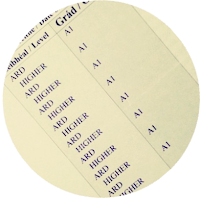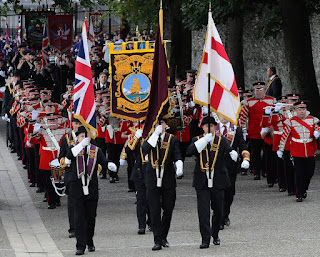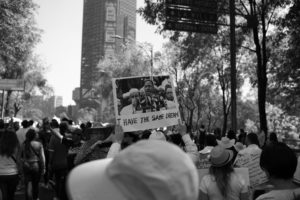What was the contribution of the Apprentice Boys of Derry to the celebration of religious and cultural identity among that city’s unionist minority? (2006)
The Apprentice Boys of Derry, founded in the 1880s to commemorate the Protestant victory over Catholics during the Siege of Derry, was of major importance to Derry unionists who wanted to celebrate their culture and religion. In a city where they were a minority, unionists used the Apprentice Boys to celebrate their history and the organisation provided a religious and cultural outlet for them with its parades, commemorative events and meeting halls. The Apprentice Boys also made a significant negative contribution to the celebration of Ulster culture however, as the violence and sectarianism that often accompanied their events went down in history as the starting point of the Troubles in 1969.
Image: Highland Radio
The Apprentice Boys provided Derry unionists with a much needed outlet for their cultural pride. After the foundation of Northern Ireland in 1920, unionists struggled to develop a cultural identity, depending instead on British culture. The government at Stormont made little attempt to encourage Northern Irish literature or arts and schools taught English literature and history through the English language. Northern Ireland didn’t even send a representative to the Festival of Britain, claiming that they shared in the British culture. This lack of cultural identity left a hole in Ulster identity and the Apprentice Boys, along with other Loyal Orders such as the Orange Order, filling that hole with pride in Protestant history and faith.
Another major contribution that the Apprentice Boys made was a knowledge and celebration of Protestant history. The organisation had been founded to celebrate the Siege of Derry in 1688, when 13 apprentice boys locked the gates of Derry to keep out the Catholic King James II and his army, who were locked in conflict with the Protestant King William of Orange. James’ forces laid siege to the city but eventually broke in 1689 when William sent the Mountjoy up the Foyle to break down barriers. The event provided the Apprentice Boys with their name, with a reason to parade during Ulster’s marching season and with many words and slogans that worked their way into the unionist vocabulary. The term “lundy”, used to refer to traitors, comes from the Protestant Colonel Lundy who fled Derry before the siege and the slogan “no surrender” came originally from the words shouted by the apprentice boys as they locked Derry’s gates.
Using the Apprentice Boys to draw parallels between the Siege of Derry and the situation that unionists were experiencing in the sixties served to strengthen pride in being a unionist. As nationalists in the South campaigned for a united Ireland, Northern unionists compared themselves to the besieged inhabitants of Derry in 1688, and compared the Catholic army of King James to the nationalists who they viewed as their oppressors. They viewed the North-South border to be a contemporary equivalent of the walls of Derry, keeping the nationalist masses out of Northern Ireland and their determination to keep them out was strengthened by a desire to uphold the victory of the Derry Protestants in 1689. This helped unionists to form their own self-image which they could project on to their cultural identity and was instrumental in solidifying unionist ideals.
Marches and commemorative events organised by the Apprentice Boys to remember the Siege gave Derry unionists a tradition to latch on to, something that they had otherwise been lacking. Every December, a march was held to commemorate the closing of Derry’s gates and on the 12th of August, in the middle of marching season, huge parades were organised to remember the arrival of the Mountjoy and end of the siege. Huge parades would wind around the city walls of Derry with members dressed in crimson sashes and carrying flags. The most popular parades saw crowds of up to 40,000 people and in 1964, the parade had so many members that it was two and a half miles long. During the December marches, Lundys, stuffed effigies of the Colonel were burned on bonfires. Ceremonies after the march also initiated new members, which can only happen within the Derry walls. These marches gave unionists something to claim as their own culture and traditions and allowed them to stand on their own two feet against the Catholic majority in Derry city.
The spectacles that resulted during march days also presented unionists in Derry with a family event that could be used to foster cultural and religious pride. Families, children and all, would line the streets to watch the Apprentice Boys’ parades and would attend the bonfires. Up to a hundred bands could take part in any one parade, providing people with a day of entertainment and as with the Orange Order marches, people would bring picnics and listen to speakers at the end of the parade. Just as the Gaelic League and the Gaelic Athletic Association provided nationalist families with cultural activities like theatre, sports, dancing and music, the Apprentice Boys contributed activities to be highly anticipated to the unionist movement in Derry.
In another parallel to the services of the Gaelic League and the GAA to nationalists, the Apprentice Boys gave unionists somewhere to meet and discuss their ideas and opinions in the North. In a similar set-up to that of the Orange Order, the Apprentice Boys consisted of eight Parent Clubs, named after the Protestant leaders during the siege, who were based in Memorial Hall in Derry. Each Parent Club organised branch clubs across the North, England, Scotland and Canada that served as places where their 12,000 members could meet and share their thoughts. Members could also meet at marches and this was of great significance as it allowed Protestant men to band together in support of mutual causes and strengthen a sense of unionist culture.
Religiously speaking, the Apprentice Boys were important in fostering a sense of pride in the Protestant faith. Membership was open strictly to men who practiced the “reformed Protestant faith” and was much more focused on the religious aspect of Ulster culture than the political Orange Order. Small marches often ended at the local church and the 12th of August parade in Derry always ended with a service in the Protestant St. Columb’s Cathedral. Despite the fact that many politicians such as Terence O’Neill, Ian Paisley, Lord Brookeborough and Brian Faulkner were members of the Apprentice Boys, the organisation put much more emphasis on the importance of string Protestantism. This was instrumental in allowing unionists in Derry to celebrate their religion, surrounded by the Catholic nationalist majority.
The Apprentice Boys also made multiple negative contributions to unionist celebrations of culture in Derry, one major example being the sectarianism that the organisation promoted. As their entire foundation was based on the celebration of Protestant superiority over Catholics, the organisation encouraged sectarianism from the start. Catholic members were not allowed and the 12th of August parade always started on the Mall Wall in Derry. The Mall Wall overlooked the Catholic ghetto of the Bogside and this was a powerful symbol of perceived Protestant superiority over Catholics. The significance of this sectarian practice was not lost on the Apprentice Boys’ members, such as Ian Paisley who became a prolific leader of sectarian anti-Catholic activities in the North.
The violence that often occurred during Apprentice Boys’ parades was another hugely negative contribution that they made to the celebration of unionist culture. In October 1968, the Apprentice Boys organised a march to protest against a Civil Rights march in Derry. Minister for Home Affairs, William Craig banned both the Apprentice Boys’ march and the civil rights march but leading civil rights activists like Eamonn McCann marched into Derry with 400 nationalist civil rights campaigners anyways. When the RUC police moved in against the marchers, violence erupted and men, women and children were severely beaten as the entire thing was broadcast on television. Despite the fact that the Apprentice Boys didn’t actually get involved in the Derry clash, their name had been associated with the event as a result of their previous plans to march and the violence became associated with the organisation.
The Apprentice Boys also cast shadows on unionist culture when it became directly responsible for the start of the Troubles in 1969. On the 12th of August 1969, the Apprentice Boys gathered on Mall Wall to start their annual parade. Some members threw pennies down onto the Bogside and the young Catholic inhabitants retaliated with stones and petrol bombs. The Apprentice Boys reacted to this with more violence and soon a full-blown two-day battle was raging in the Bogside. The RUC were attacked by Catholics throwing stones from the top of the Rossville flats and the B Specials had to be called in to contain the riots. From the Bogside, violence and riots spread to Belfast and the British government had no choice but to send in the British Army. This marked the start of the Troubles which lasted well into the 1990s and saw the IRA, the Northern police, the British Army and paramilitary Unionist groups like the UDA slaughter each other and destroy towns and cities with bombs. This undoubtedly gave the Apprentice Boys and the unionist culture that it celebrated a bad name among many.
In conclusion, the Apprentice Boys brought both good and bad to the table when it comes to the celebration of unionist religion and culture. On one hand, the organisation allowed Derry unionists to create and celebrate a history and culture, as well as freely practice their religion in an otherwise Catholic city. On the other hand, it brought violence and sectarianism into unionist culture which overshadowed those who just wanted to celebrate their heritage and identity.
 |
|
Leaving Cert Sample Answers and Notes
|




